As






iron sharpens iron January summit to focus on developing leaders
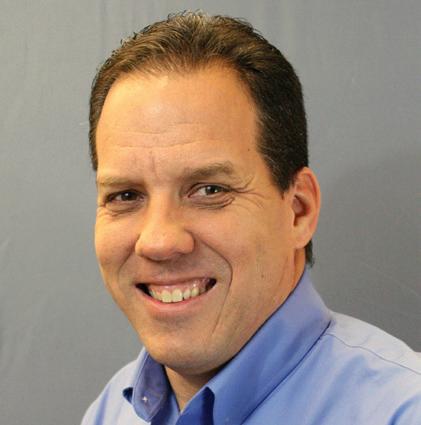

Springfield | About 250 leaders from IBSA churches will gather in Springfield January 26-27 for the Illinois Leadership Summit. As a follow-up to the Midwest Leadership Summit last January, which brings together leaders from 10 state conventions every three years, this Illinois-focused conference is expected to build on the momentum of the large regional event.


“I believe this is the first of its kind training that we have designed specifically for individual leaders,” said Mark Emerson, associate executive director of IBSA’s Church Resources team. “IBSA often holds training that focuses on church positions or ministry
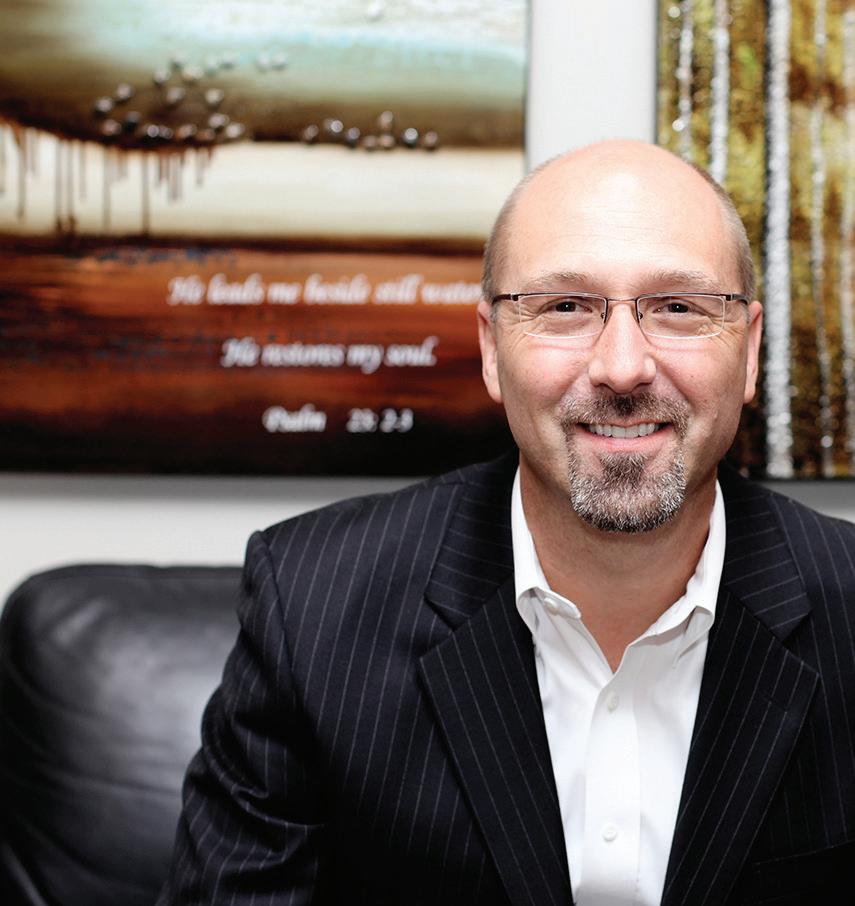
CONVENTIONAL WISDOM
Snapshots from the world of Illinois Baptists
“…some of the largest Christian denominations in the U.S. have relatively low levels of involvement among their members.”
– Pew Research
christians: moderate involvement in church
Most Christians have a medium level of involvement in their congregation, based on membership, worship attendance, and small group attendance.
southern baptists: not a lot better
Fewer than half of Southern Baptist church members are highly involved, according to Pew’s measurements:
Higher Resolution
We have a new TV at our house. It was probably overdue, because our previous TV was 15 years old, square, and only showed about two-thirds of the information that now seems to scroll continuously along the bottom of the screen.
But that outdated, misshapen, low resolution, antiquated TV simply would not die on its own, though I would occasionally toss the dog a ball in its direction, hoping something would happen. The old TV was still functional, and so year after year, we kept settling for that increasingly dated picture of our world.
As we now enter a new year, I feel the need for higher resolution in my spiritual life as well. Perhaps you do too. I don’t want to keep settling for an old picture of how things are, or how they should be, while the rest of the world is so quickly changing around me. I want my life and my church to have a sharp, accurate new picture of our purpose and mission in the world.
What does that mean? Well first, I think I need a new, higher-resolution picture of lost people. I need to stop seeing those around me who don’t know Christ as satisfied, selfsufficient neighbors who deserve their privacy. I need to see them clearly as hollow souls, spiritually dead on the inside, who are living life with quiet, inward desperation until someone finds a way to break through with the good news about Jesus.
The groups with the highest percentages of highly involved members are Mormons (67%) and Jehovah’s Witnesses (64%).
– PewForum.org
I also need a higher resolution picture of what it actually takes for me and my church to deliver this good news. I can’t keep seeing the routine weekly schedule of my church as an adequate witness in my community. I need to see clearly what behaviors and changes are needed to actually share the gospel with people, and welcome them into the family of disciples that we call church.
I wrote recently about five actions that, statistically speaking, most often result in people coming to faith in Christ. They are an evangelistic prayer strategy, Vacation Bible School, witness training, outreach events, and starting intentional new groups. If my church and I don’t at least embrace those proven actions, we’re probably not seeing clearly at all.
The Illinois Baptist staff
Editor - Eric Reed
Contributing Editor - Lisa Sergent
Graphic Designer - Kris Kell
Editorial Contributor - Meredith Flynn
Administrative Assistant - Andrea Hammond

For questions about subscriptions, articles, or upcoming events, contact the Illinois Baptist at (217) 391-3110 or IllinoisBaptist@IBSA.org
The Illinois Baptist is seeking news from IBSA churches. E-mail us at IllinoisBaptist@IBSA.org to tell us about special events and new ministry staff.


POSTMASTER: The Illinois Baptist is owned and published every three weeks by the Illinois Baptist State Association, 3085 Stevenson Drive, Springfield, Illinois 62703-4440. Subscriptions are free to Illinois Baptists. Subscribe online at IBSA.org
Finally, I also need a higher resolution on what people, organizations, and partners are actually advancing the gospel, and most deserving of my time and resources. A couple of years ago, my wife and I updated our estate plan, and it made us think carefully about where we want the resources of our life to go. Sadly, in just a short time, some of those organizations or people have changed or drifted enough that we feel a need to rethink our plan. We want to generously give our best, but with a clear, current picture of where our investment brings the greatest Kingdom return. I’m happy to say that our cooperative missions work here in Illinois is still on the top of that list.
You should see our new TV. It’s not only larger than the old one, the picture is incredibly sharp, it’s relatively lightweight, and because it’s a “smart” TV, we can now access all kinds of new features through the Internet. It’s amazing. Yet it cost less than half of what we paid for its antique predecessor 15 years ago.
I can see things so much more clearly now. It makes me wonder why I waited so long to get a better picture. I don’t want to wait any longer to get a clearer picture of what it takes to reach people with the gospel either. I think that higher resolution will also give me higher resolutions for this new year.
Nate Adams is executive director of the Illinois Baptist State Association. Respond at IllinoisBaptist@IBSA.org.

In the new year
I want a sharp picture of our purpose and mission in the world.
Protecting religious liberty
Write your legislators, Illinois pastor asks
Harrisburg | A pastor in Southern Illinois is urging Illinois Baptists to write to state lawmakers on the issues of same-sex marriage and religious liberty.
Stephen Nyberg, a member of the IBSA Resolutions Committee, led the committee to present the “Reso lution on the Call to Public Legal Protection for Pastors and Churches in Light of the Supreme Court’s Ruling on Same Sex Marriage” at the 2015 IBSA Annual Meeting.
The resolution, which messengers approved, asks Illinois Baptists to contact their state representatives and senators “to encourage the enactment of such legislation in Illinois as to guarantee the United States Constitutional right to the freedom of religion with respect to the recognizing or performing of same sex marriages.”

The legislation in question is based on the “Pastor Protection Act” passed by Texas lawmakers in June, prior to the U.S. Supreme Court’s ruling to legalize same-sex marriage nationwide. The act says religious organizations and people do not have to perform marriage ceremonies that violate their beliefs. Nyberg, pastor of Pankeyville Baptist Church in Harrisburg,
Follow the latest Illinois Baptist news






would like to see similar legislation passed in Illinois.
Following the IBSA Annual Meeting, he provided a template for the letter he’s asking Illinois Baptists to write:
Dear Representative or Senator, I am a registered voter in your district. I am writing to ask you to sponsor legislation to protect our churches and our pastors from legal action for not participating in “same sex marriages.” The constitution guarantees the right of freedom of religion, but everywhere it seems that right is being taken away from us. We need your help. Please reply as to what action you are taking or will take in this urgent matter.
Pastor Nyberg noted it is important that the letters are handwritten because they “carry more weight with elected officials,” and that writers ask for a reply detailing what action the legislator will take in response to the letter.
Nyberg may be reached at nyberg@ shawneelink.net. To read the entire resolution adopted at the IBSA Annual Meeting, go to IBSA.org/IBSA2015.
Praying for revival Students focus of Jan. 22 meeting
Carbondale | A pastor in Southern Illinois is calling Christians across the state to meet together this month to pray and fast for spiritual awakening among the more than 850,000 college students in Illinois.
Phil Nelson, pastor of Lakeland Baptist Church in Carbondale, sent a letter to Illinois Baptist churches late last year, urging churches toward increased prayer for and involvement on college campuses.
“In 1985 when I came as a campus pastor to Southern Illinois University, we had over 1,000 students that claimed to be associated with a Baptist church in Illinois, but just four years ago our list from the university of students who claimed an association with a Baptist church was less than 50,” Nelson wrote.
“In a state where over 850,000 are enrolled in college work we have very few viable ministries to our American students. This cannot be our position any longer for the sake of the Gospel in the lives of our children and young adults.”
Nelson said the idea for the prayer meetings began to take shape at the 2015 IBSA Annual Meeting, where he connected with potential host pastors. Four churches so far have committed to host a prayer meeting on January 22, and there is still time for more to sign on, Nelson said. The four sites currently are:
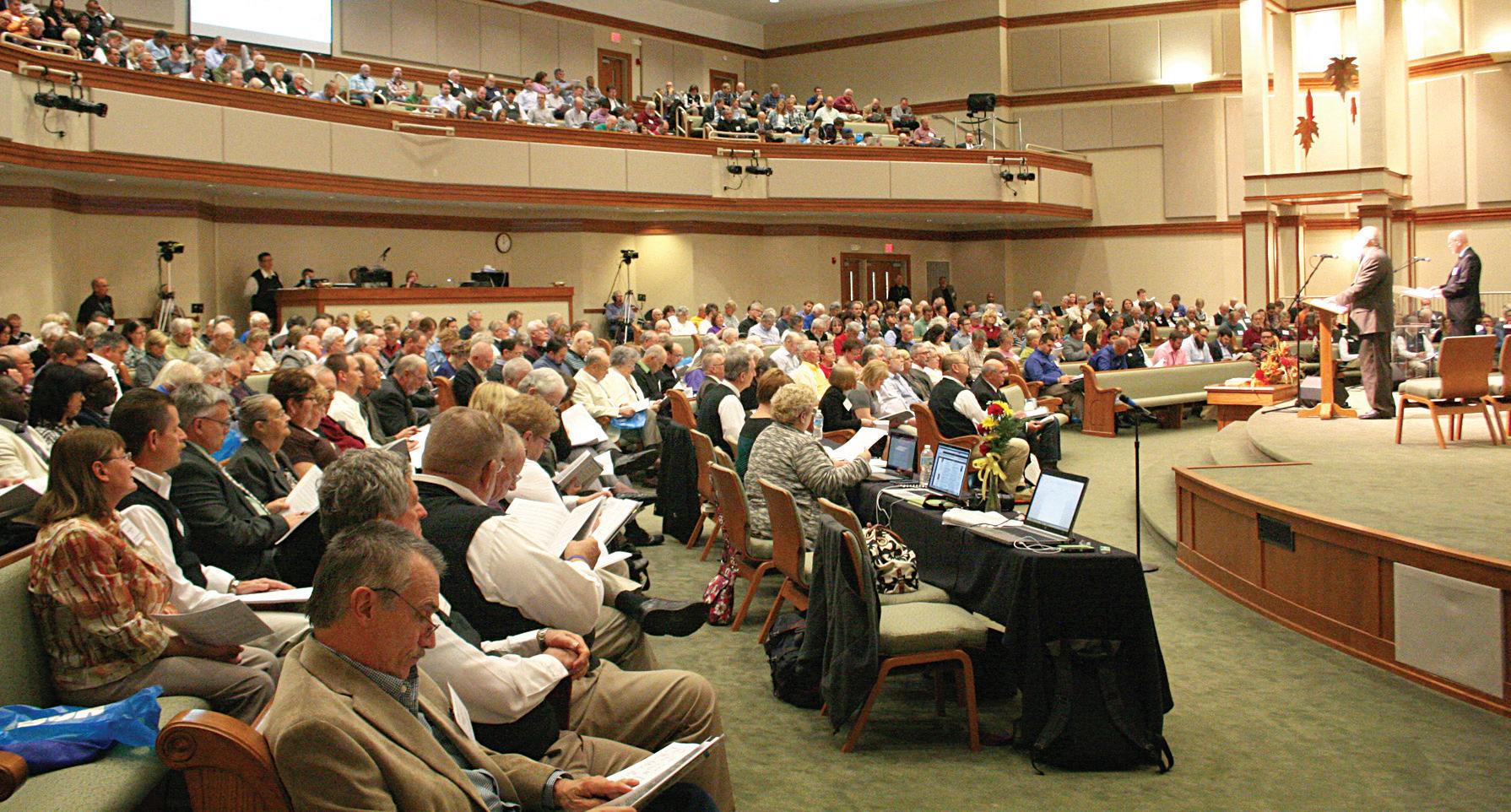
• Evanston Baptist Church, Evanston
• College Avenue Baptist Church, Normal
• First Baptist Church, Bethalto
• Stonefort Missionary Baptist Church, Stonefort
Each meeting will begin at 9 p.m. and end at 6:00 the next morning. Each hour of prayer is divided into several segments and will include times of group prayer, worship and fellowship. Pray-ers are invited to come and go, Nelson said.
The format is based on a prayer gathering he attended in 1976, shortly after he became a Christian as a college student at Southern Illinois University. That meeting “changed the campus make-up at Carbondale,” Nelson told the Illinois Baptist. He shared more about the experience in his letter to churches:
“I participated in an all-night prayer meeting where many evangelical campus ministries came together to pray and fast throughout the night and ask God to bring an awakening on our campus,” Nelson wrote.
“That spring we saw many students in every ministry come to trust Christ and many of those who trusted Christ are now still spread across this globe in active evangelical ministries to this day.”
For more information about the January 22 prayer meetings, contact Nelson at pastorphill@lakeland church.org or (618) 529-4906.
Pastors meet in learning cohorts
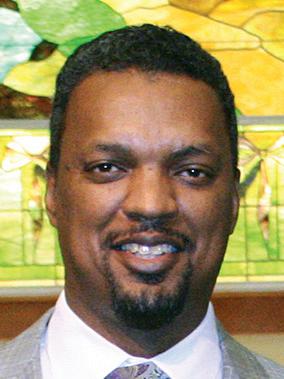
Springfield | IBSA’s Church Consulting Team will work this year to expand a network of cohort groups meeting across the state.
The cohorts—small groups that meet on a regular basis around a common interest or need—are designed to hone group members’ leadership skills.
They have some similarities with the small groups a church would facilitate, but while those exist to develop followers of Christ, cohorts should develop leaders that then develop followers of Christ, said Jack Lucas. An IBSA zone consultant and pastor in Mt. Vernon, Lucas currently facilitates two of the groups.
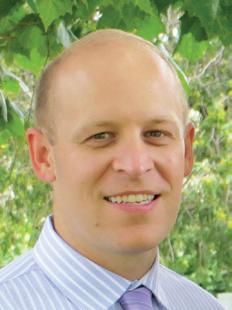
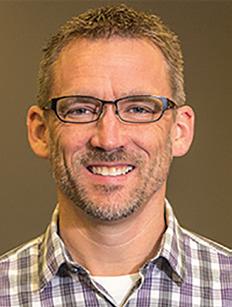
One of Lucas’ cohorts meets in Mt. Vernon and is going through a book on coaching/mentoring, while the other splits time between Carmi and Fairfield and focuses on how to build Christian community.
“What I’ve really enjoyed about it is hearing the other guys’ perspectives,” Lucas said. “The group dynamic of learning from one another has been outstanding for me.”
Lucas’ Mt. Vernon group meets in a local church, while the Fairfield/Carmi group meets over lunch. Although a few of the pastors involved in his cohorts have some experience with similar groups, for most, this is new, he said.
As new cohorts form in 2016, they’ll meet on a consistent basis to encourage, assist and network over shared interests, ideas, resources, best practices and needs, said Pat Pajak, IBSA’s associate executive director for the Church Consulting Team. The cohorts share a common goal: “What they’re trying to do is walk away having sharpened their leadership skills so that they can be more
effective and more productive in their areas.”
Pajak is facilitating a cohort for pastors in Sandy Creek Baptist Association that recently met to talk about sermon preparation. Another group in Capital City Baptist Association is focusing on best practices in conflict resolution.
Other potential topics include evangelism, discipleship, prayer, revitalization, small groups, missions involvement, pastoral administration, worship, and church planting.
Cohorts may meet monthly or quarterly, for six to eight weeks, or a year. Some meet over breakfast or lunch, and some are presentation-based while others are studying a curriculum together.


The main goal, Pajak said, is to finetune cohort members’ leadership skills. There’s also a multiplication angle—the hope is that a member or two of a particular cohort will someday start a new group.

While learning together is certainly beneficial, Lucas said, the relationshipbuilding that happens in a cohort is just as important. In his cohorts, “the biggest benefit, even more than what we’re studying, has been that they’re getting to know each other.”
He’s seen leaders in his cohorts connecting over Facebook and text message. They’re learning together, Lucas said, “but we’re also finding out we’re not alone, that we have guys we can lean on, guys we can call, and get help from when we need it.”
For more information about cohorts, or to connect with an IBSA zone consultant in your area, contact the Church Consulting Team at (217) 391-3137.
Continued from page 1
skills, but this training is unique in that it focuses on the individual leader.”
The Illinois Leadership Summit is part of IBSA’s ongoing leadership development plan. The conference will feature 27 speakers in 32 breakout sessions, including some Illinois pastors who will share experiences from their churches. Among the speakers are Heath Tibbetts of First Baptist Church of Machesney Park, Michael Nave of Cornerstone Church in Marion, Sammy Simmons of Immanuel Baptist Church of Benton, Adron Robinson of Hillcrest Baptist Church in Country Club Hills (metro Chicago), and Doug Munton of FBC O’Fallon. (The full list is online.)
Keynote speaker for the event is Bob Bumgarner, executive pastor of Chets Creek Baptist Church in Jacksonville, Florida. He is a leadership expert who formerly served with the Florida Baptist Convention.
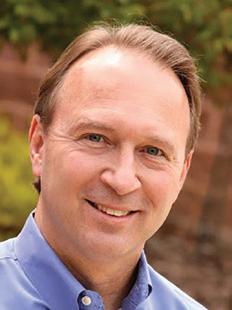

Bumgarner will teach IBSA’s four-phase leadership development process: leading self, leading followers, leading leaders, and leading the organization.
“This training is important for pastors because it is common in the ministry to reach a leadership lid,” Emerson said.
“Some of us are dealing with barriers to growth in our church that are out of our control—buildings, parking, location. But growing as leaders is something that all of us can do this year. If we grow as leaders, the church also grows.”
Seating is limited. Register online at IBSA.org/summit
For more from Bumgarner, see the Tabletalk column on page 13.
the IBSA. org 5 January 04, 2016 Survey
Who is evangelical?
SBC and NAE seek to define basic tenets
Nashville, Tenn. | A report two years in the making tries to define the basic beliefs of evangelicals whose theology by some accounts has been growing squishy in recent decades. “Evangelicals have been misunderstood and categorized incorrectly so often, and must of that is due to inconsistent identification in research,” said National Association of Evangelicals (NAE) president Leith Anderson. “Now we have a way to measure evangelical belief with confidence.”
17 questions that were eventually narrowed to the set of four. The statements closely mirror historian David Bebbington’s classic four-point definition of evangelicalism, but with an emphasis on belief rather than behavior, said Ed Stetzer, executive director of LifeWay Research.
“(Denominational) affiliation and behavior can be measured in addition to evangelical beliefs, but this is a tool for researchers measuring the beliefs that evangelicals—as determined by the NAE—believe best define the movement. And, just as Native Americans might best define who is a Native American, we think evangelicals can best define evangelicals,” Stetzer said.
Evangelical state of the union
Pew Research has found while a majority of people in every state of the union identify as Christian, religious affiliation varies widely depending on the region. Mainline Protestants are clustered in the upper Midwest. Evangelicals are the largest group throughout the South, but even there, only Tennessee has a clear evangelical majority. Utah and New England are the least evangelical areas, along with Washington D.C., at 8%.

The Bible is the highest authority for what I believe.
It is very important for me personally to encourage non-Christians to trust Jesus Christ as their Savior.
Jesus Christ’s death on the cross is the only sacrifice that could remove the penalty of my sin.
Only those who trust in Jesus Christ alone as their Savior receive God’s free gift of eternal salvation.
With input from a diverse group of sociologists, theologians and evangelical leaders, LifeWay Research designed and tested
While earlier surveys estimated the number of evangelicals in America between 23% and 35%, NAE/LifeWay Research narrowed it to 3 in 10 Americans by statistical definition of what would count as evangelical by belief.
“The biggest challenge in defining evangelicals is that too many people want to affirm evangelical beliefs, to the point you can end up with an unrealistic percentage—no one thinks the majority of Americans are evangelicals,” Stetzer said.
LifeWay conducted the survey of 1,000 U.S. adults in September 2015.
– Reported by Baptist Press
New churches reach unreached
Study shows more churches opened than closed in 2014
Nashville, Tenn. | America is launching new Protestant churches faster than it loses old ones, attracting many people who previously didn’t attend anywhere, new LifeWay Research studies show.
More than 4,000 new churches opened their doors in 2014, outpacing the 3,700 that closed, according to estimates from the Nashville-based research organization based on input from 34 denominational statisticians.
And on average, 42% of those worshipping at churches launched since 2008 previously never attended church or hadn’t attended in many years, LifeWay Research found in an analysis of 843 such churches from 17 denominations and church planting networks.
The church planting study indicates newly planted churches are more effective than existing ones at drawing people who aren’t connected with a church, said Ed Stetzer, LifeWay Research executive director.
“In winning new converts to Christ, church plants are light-years ahead of the average church because of their focus on reaching the unchurched,” Stetzer said.
Successful church launches have several factors in common, the 2015 National Church Planting Study shows:
Meeting in a public space. New churches meeting in schools have significantly higher worship attendance than other new churches. They report more new first-time commitments to Christ and are more likely to become financially selfsufficient.
Focusing on outreach. New churches offering sports leagues, social gatherings and children’s special events are significantly more likely than other startups to be congregations with a majority of people who previously did not attend church.
Supporting their leaders. Adequate compensation and health insurance for the church planter are linked to higher worship attendance and a greater likelihood of financial independence for the new church.
Starting more churches. New churches that invest in church planting and launch at least one additional new church in the first five years report higher worship attendance and more new commitments to Christ.
“Healthy new churches have an outward focus from day one, communicating every month that the goal is to be a multiplying church,” Stetzer said.
– Baptist Press
Meet the pressure
In his new memoir “How’s Your Faith?,” former “Meet the Press” host David Gregory reports a meeting with the head of the SBC’s Ethics and Religious Liberty Commission had an impact on his decision to leave the famed news program:
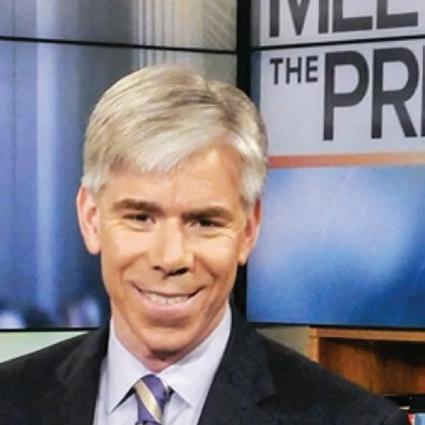
“One day, as the long, drawn-out drama of my departure from NBC was coming to a head, I met the Southern Baptist leader Russell Moore at his Capitol Hill office…. I asked Dr. Moore… ‘Who does God expect me to be?’
“Dr. Moore answered me with his own questions. ‘The fundamental question here is, Who are you?’ he said. ‘Whether you have a national profile, or you are the guy running a hardware store in a small town, you are ultimately facing the same question, which is: Do you define yourself by your work or as someone created in the image of God? Are you the owner of the hardware store or someone who must give an account to God?’”
Stoner Bible study
In Colorado, where marijuana is legal, a group calling itself Christian has combined two favorite pastimes: Bible study and smoking pot. The group has “really good spiritual conversations in this setting,” participant Mark Button told a Denver TV station. “We get really deep, deeper than I have ever gotten before.” The group’s leader admits there is a stigma attached to marijuana, but they say “relaxing” helps them better understand the Bible.
breaking news in The Briefing online, posted every Tuesday at www.ib2news.org.
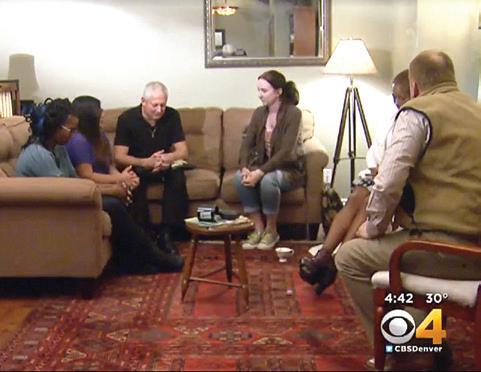
sound off
Talks have broken down between Wheaton College and Larycia Hawkins, a political science professor who donned a Muslim headscarf in December. Hawkins was suspended by the evangelical school for writing on Facebook that Christians and Muslims worship the same God. The college offered to reinstate her if she forfeited her two years of tenure. Hawkins refused.

Previously the school and professor have had conflicting views on sexuality and liberation theology.
– from One News Now
reporter’s notebook
The year of orange
Larycia Hawkins (left), a Wheaton College professor, announced she would wear a Muslim headscarf throughout Advent as a way of showing solidarity with Muslims. In a Facebook post, the professor explained she’d wear a hijab to work, class, and church.
In particular, Hawkins, a Christian, said she wishes to express support for Muslim women. “I don’t love my Muslim neighbor because s/he is American. I love my Muslim neighbor because s/he deserves love by virtue of her/his human dignity,” Hawkins wrote. “I stand in human solidarity with my Muslim neighbor because we are formed of the same primordial clay.”
For some observers, her demonstration missed the mark. In 2015 we saw many Christians trying to identify with people in need: Some identified with Muslims in general as the American political rhetoric turned against them. Some identified with Syrian refugees, including Muslims and Christians, fleeing persecution. And for some American evangelicals, the fashion statement of the year was not a headscarf, but a jumpsuit.
As the Illinois Baptist editors discussed the images that characterized 2015, there

was a strong case to be made for that grainy video freeze-frame we saw in February: 21 Coptic Christians in orange jumpsuits, kneeling on a Libyan beach with knives held to their throats by ISIS-rebel captors. Gratefully, the image from just seconds later was not widely distributed by news services: 21 Christians beheaded.

This may have been the most horrific image any of us have ever seen.
It proved what we have heard all our lives. Christians will face persecution for our faith and some may be martyred. But not in our lifetimes has martyrdom seemed so possible, or even probable. No longer is it that Christians may be martyred. Christians will be martyred. The mass shooting in San Bernardino by a radicalized Islamic couple proves it can happen even here in the United States.
If we’re looking for someone to identify with, let’s consider again those men in orange jumpsuits. Their lives—and deaths— force us to confront the strength of our own faith. Jesus told us to lay down our lives and take up the cross.
In contemporary terms, are we ready to wear orange?
65+ 90% Students

THE BIG PICTURE
IN FOCUS ‘Fear not’
After an often tearful year, the Christian’s counterattack is hope.
To call 2015 “the year of fear” is to surrender the chief characteristics of our faith. We are people of hope, even though we live in a scary world. We are people of light, although the world seems exceedingly dark right now. In selecting the top stories of the year, we faced the harsh realities of our times: terrorism drawing nearer to home, unrest in our cities; the rise of sexual confusion, the decline in morality; the assault on religious liberty, marriage, and the family. Our own denomination is leaning into the challenge: Decline in American churches has reached Southern Baptists. We must anticipate the impact of recalling 15% of our international missions force on our efforts to push back the darkness.
Yet, we remain people of hope. “Fear not,” Scripture says 365 times. Prophets and angels and our Lord, Jesus Christ himself, tell us “do not fear.”
The enemy may use the events of last year to strike chords of fear, but in reporting them, we offer notes of hope for 2016. Sometimes they sound faintly, but we still hear them. God is in control of this world, and whatever happens, this history being made before our eyes will turn people toward him. He is our hope.
This is our certainty as we anticipate the new year, our hope.
– The Editors
What 2015’s big events forecast for the new year
All too common These makeshift memorials are often the only touchpoint people have after inexplicable tragedy. Following the November terrorist attacks in Paris, people poured into the streets to express their grief and, perhaps, to find hope.

It looks like the ‘60s again
Chicago joined the list that started with Baltimore and Ferguson, Missouri as protestors against police shootings of young African American men took the streets, often chanting “black lives matter.” In contrast to other troubled settings, recent marches in Chicago were mostly peaceful, despite the volatile subject matter.

Race-related protests at the University of Missouri in Columbia led to the resignations of both the president and chancellor. Even the sense of safety a church provides was shattered one June evening, when a white shooter shot and killed nine people while they met for prayer at Emanuel African Methodist Episcopal Church in Charleston, S.C.
In response, religious leaders continue to the call for racial reconciliation. But the church’s role is unclear. Some are counting on the church to bring peace, others say the church is fanning the conflict.
According to Barna Research, 84% of Americans agree “There is a lot of anger and hostility between different ethnic and racial groups in America today.”
Surprisingly, Barna’s polling revealed a significant minority believe “churches add fuel to the fire of racial animus; more than one-third say ‘Christian churches are part of the problem when it comes to racism’ (38%).” The percentage is even higher among the Millennial generation (ages 18 to 31) where 46% believe Christian churches add to the problem of racism.
Despite those numbers, the same research found 73% of Americans believe “Christian churches play an important role in racial reconciliation.” That view is as common among whites (75%) as it is among blacks (77%), although Hispanics are a bit more skeptical with 67% believing churches can play a role.
A role for the church: SBC leaders have held and participated in summits and ministries aimed at reducing racial tensions throughout 2015. SBC President Ronnie Floyd declared “racism and prejudice is a sin against God” at June convention in Columbus, Ohio. At the same meeting, Floyd led messengers in a prayer for racial reconciliation within the convention’s churches and across the nation. Even more hopeful is LifeWay President Thom Rainer who forecasts fewer segregated churches in 2016. On his blog, Rainer stated, “For most of American history, 11 a.m. on Sunday was the most segregated hour of the week. That is changing. A church that is not racially and ethnically diverse will soon become the exception instead of the norm.”
Terrorists and refugees
A fear-based response is not the answer. What is?
The killing of 14 people at a social services facility in San Bernardino, California came only two weeks after the fatal shootings of 192 people in Paris in November. At first, the California attack seemed different from the Paris massacre: far fewer fatalities in a daytime shooting following angry words in the workplace.
But then, similarities emerged. Weapons of war altered to discharge more rounds and kill more people, a stockpile of explosives, young people with Middle East backgrounds, and finally the verdict: self-radicalized Muslims.
The fear of ISIS-connected terrorist attacks on U.S. soil that has marked 2015 appeared plausible and justified. But for some Christians, combatting terrorism on a national security level became complicated by biblical mandates to care for widows and orphans and strangers as we witnessed the flight of 1.5 million Syrians from their own homeland, trying to escape ISIS rebels themselves.
There was no uniform response from Southern Baptists. Several leading pastors agreed that Syrian refugees should not be admitted to the U.S. And polls showed many people agreeing with Republican presidential candidate Donald Trump who recommended halting Muslim immigration in response to terror attacks.
But others defended Muslims. Russell Moore of the SBC’s Ethics and Religious Liberty Commission cautioned, “A government that can close the borders to all Muslims simply on the basis of their religious belief can do the same thing for evangelical Christians.”
What are believers to do? First, we pray. That is not a simplistic answer. To know the mind of Christ, we study his Word and we pray. The One who instructed us to “love our neighbor as ourselves” also said “be shrewd as serpents and innocent as doves.”
Second, we can educate ourselves. The pastor who said that members of his church are “all over the place” on handling Syrian refugees can lead meaningful discussion rather than allow his flock to wander into emotional or unbiblical arguments.
Third, remember the spiritual need of all persons involved. “Our Muslim neighbors are not people we want to scream and rail at—we don’t want to demonize our mission field,” Moore told Buzzfeed. “I think that the evangelistic missionary impulse of Christianity that sometimes seculars present as nefarious actually is what grounds evangelicals to see individuals not as issues but as persons.

“Every person may well be our future brother or sister in Christ.”
Gender fluidity
Growing confusion over sexual identity

The U.S. Supreme Court ruling in June declaring same-sex marriage to be a constitutional right in all 50 states seemed to open a floodgate.
Olympic hero Bruce Jenner was named Woman of the Year by Glamour magazine after he reimagined himself as “Caitlyn.” Then, almost immediately, transgender issues multiplied, even reaching Illinois.
Consider what happened when Township High School District 211 tried to fight the federal government. A transgender boy wanted to use the girls’ locker room at Palatine High School. He was denied access by school officials. The student, who is still anatomically male, took the demand to the Department of Education. After several meetings, the suburban Chicago school board acquiesced to the demands and submitted to federal monitoring through 2017.
Andrew Walker of the SBC’s Ethics and Religious Liberty Commission wrote, “By taking the action it has, the federal government is endorsing a worldview of expressive individualism—a worldview that shuns limits, endorses controversial gender ideology, and opens up society to ever-evolving standards of sexual morality.”
So far, only Texans are successfully standing against the transgender advance. After a citywide “rights ordinance” was defeated 62% to 38% in November, Second Baptist Houston’s pastor Ed Young said, “I think there are enough people in the city who still have and will vote godly principles. A lot of people did some soul searching and said ‘This is enough.’”
What can pastors do? Ahead of these developments, Russell Moore told Baptist editors in February that transgenderism is likely to come first to the church youth department as adolescents copy the blurring of male and female identities in the larger culture. Be ready.
For pastors, the call in 2016 is to preach Genesis 1-2 descriptive of the sexes and the whole of Scripture as prescriptive of marriage, family life, and sexual identity and behavior. Have we ever before needed sermons saying “boys will be boys” not as an excuse for sin but as a plea for gender sanctity?
Meanwhile, the blurring continues—literally. Pantone Color Institute chose two hues as 2016 Color of the Year. They’re blending pink and blue to demonstrate “gender fluidity.” Pantone calls it “a color snapshot of what we see taking place in our culture that serves as an expression of a mood and an attitude.”
Religious
Christians feel rights endangered
When did we become the enemy?
In just a handful of years, we have come to understand what it means to be in the minority and to have our rights challenged. The Supreme Court ruling legalizing samesex marriage in all 50 states may serve as the line in the sand. Crossing that line happened quickly—not that Christians have moved, but the culture moved sharply to the left, putting followers of Christ on the defensive. Over half of all Americans approved of same-sex marriage, and the divide is even greater among younger people.
And so it was that in 2015 religious liberty really became an issue. Same-sex marriage may have been the flashpoint, but now the First Amendment rights of believers, pastors, and churches are on everyone’s minds. As never before, churches are asking legal and constitutional questions: Are we still protected? If so, how long will it last?
The growing divide between Christians and majority public opinion has led to increased concerns about religious freedom. In 2012, Barna Research found 33% of Americans believed “religious freedom in the U.S. has grown worse in the past 10 years.” In just three years that number grew to 41%. Among evangelicals that number today is 77%, up from 60% in 2012.

Complicated response: A 17th-century Baptist stance that the government should stay out of all religious issues is a more tenable position in the 21st century than the “God and country” approach of the Moral Majority years, when evangelicals’ morals were in the majority. Today, Baptist leaders are having to advocate from a different posture.

When Kentucky court clerk Kim Davis was arrested in September for refusing to issue marriage licenses to same-sex couples, not all Christians agreed with her refusal based on her faith.
Fellow Kentuckian Al Mohler, president of Southern Seminary, framed the larger issue: “What this story reveals beyond the headlines is that the moral revolution on marriage and human sexuality will leave nothing as it was before… A legion of Christians struggle to be faithful in their own situations, responsibilities, and callings, and our churches will struggle to find a new relationship with an increasingly hostile government and society.”
Reduction in force
Missionaries return, churches to step up
The tone was set at the 2015 Southern Baptist Convention: If we’re going to continue sending missionaries to people groups who haven’t heard the gospel, the missions paradigm has to change.
“Churches almost unknowingly begin to farm out missions to missions organizations,” International Mission Board President David Platt said during the missionary commissioning service that coincided with the Convention.
“But this is not how God designed it.”
Instead, said the leader of the world’s largest evangelical missions organization, local churches must play a greater role in sending missionaries to the ends of the earth, like the first-century church at Antioch did.
Two months later, Platt announced 600800 missionaries and staff would end their service with the IMB through a voluntary retirement incentive and subsequent handraising opportunity. And the local church was still central to the conversation.

IMB released a list of ways churches can support returning missions personnel. Many, including Illinois pastor Doug Munton, publicly encouraged local congregations to consider hiring returning missionaries to fill vacant staff positions.
At their September meeting, the SBC Executive Committee adopted a resolution encouraging churches to give to the Cooperative Program—Southern Baptists’ main method of funding missions—“more than ever before” in light of the IMB cuts.
Since Platt was named president in 2014, he has prioritized the responsibility of local churches and everyday Christians to leverage what they have so that more people around the world might hear and respond to the gospel. And not just through monetary gifts.
“Even if our income from churches were to double over the next year...we would still have a cap on our ability to send a certain number of full-time, fully supported church planters,” Platt said when he announced the personnel plan in August. The solution: “Consider all of the different avenues that God created in His sovereign grace for multitudes more people to go.”
What it means for churches: Those avenues may find business people, college students and retirees in your church leaving their lives in the U.S. to take the gospel to people who have never heard it. Local congregations have an opportunity to expand the ways they think about missions, and to encourage “regular” people in the pews to do the same.
Convention in flux
Floyd emerges as Baptist statesman
In late 2015, Southern Baptist Convention President Ronnie Floyd wrote a blog post titled “Why we are where we are.”
It could well have been the slogan so far for Floyd’s year-and-a-half as SBC president. The Arkansas pastor has used his platform and his online presence to paint a picture for Southern Baptists of the state of things and how to move forward together.
Throughout his presidency, Floyd has identified pressing issues for Baptists. He has written about how to think and pray on global issues like immigration and terrorism. Within the Convention, he has highlighted the need to pray for spiritual awakening, culminating in a corporate prayer meeting last summer in Columbus, facilitated by Floyd.
He also has championed the Cooperative Program, calling for it to be “the financial priority of each of our churches” after the International Mission Board announced a plan to cut personnel in light of budgetary shortfalls.
“If you are concerned about some of our missionaries having to come home and the decrease of our missionary forces,” Floyd wrote, “the greatest thing your church can do to help turn it around is increase your giving through the Cooperative Program. It helps build our base of support financially, which in turn will increase our ability to reach the world.”
Looking ahead: Giving through the Cooperative Program was up 1.39% for the 2014-15 fiscal year, an encouraging increase following several years of calls from SBC leaders for churches to increase their giving. In 2016, look for more information about “Great Commission Advance,” an initiative introduced at the Convention in Columbus. It’s set to run through 2025, the 100th anniversary of the Cooperative Program.
When Southern Baptists elect a new president in St. Louis this summer, the “Floyd factor” likely will be in play, as the denomination looks for another leader able to bring Baptists together around key issues inside and outside the Convention.
Meet me in St. Louis
Southern Baptist Convention | June 14-15, 2016

Editor’s note: The 2016 Southern Baptist Convention will convene in St. Louis June 14-15, preceded by the annual Crossover evangelism event, which will include projects in Missouri and Illinois. Leading up to the Convention, each issue of the Illinois Baptist will feature a page with SBC updates and suggestions for planning your trip.
In this issue, hear from SBC President Ronnie Floyd about why the St. Louis meeting should be on your calendar:
Coming off our largest convention meeting since 2012 in New Orleans, our Southern Baptist family begins to dream and cast the vision for our next gathering in 2016 in St. Louis.
Save the date: June 14-15, 2016.
Will I see you in St. Louis on June 14-15, 2016, for our Southern Baptist Convention? Please mark your calendar now for this upcoming and dynamic experience with our Southern Baptist family. Make these dates non-negotiable and decide now to be in St. Louis for our 2016 Southern Baptist Convention and bring people with you.
See the vision for St. Louis Metropolitan St. Louis needs the saving message of Jesus Christ. Our nearly 2,000 Southern Baptist churches in Missouri need the encouragement of our greater Southern Baptist family.
Why should we see the vision of metro St. Louis?
• 2.73 million people live in metro St. Louis
• 1 out of 7 Missourians live in metro St. Louis
• 50.9% of the population is unaffiliated with any religious body
• Only 17.9% of the population of metro St. Louis is affiliated with an evangelical church
• St. Louis is one of the North American Mission Board’s SEND focus cities Southern Baptists, how do we not go and make a difference in metro St. Louis? You see, when we speak of metro St. Louis, we are also talking about East St. Louis, Ill. Two states will be impacted by our gathering this year.
How can your church participate in Crossover St. Louis a few days ahead of our convention? They will be able to assist new church plants or help established churches. This leads up to the major Crossover event on Saturday, June 11. Then, your church members can stay and attend our
convention on June 14-15. Please strongly consider this.
Stand together to reach the world
When you fly or drive into St. Louis, you will notice the Gateway Arch as you enter the city. It stands 630 feet tall and 630 feet wide. This remarkable structure has been known as America’s gateway to the West, with St. Louis the Gateway City. In 2016, Southern Baptists need to converge on this city from all over the world and see it as our gateway to reach the world for Jesus Christ. Stand with us!
– This column originally ran on Floyd’s website, RonnieFloyd.com, and is excerpted from Baptist Press.

Now: Think about Crossover
Prior to every Southern Baptist Convention, volunteers arrive early in the host city for Crossover, an evangelism event that partners visiting mission teams with local churches. Crossover St. Louis is scheduled for June 11, 2016.
“I think that St. Louis is poised and ready for the attention that God is bringing to starting new churches and revitalizing churches here in St. Louis,” says Pastor Noah Oldham in a video about Crossover, “and just for a week
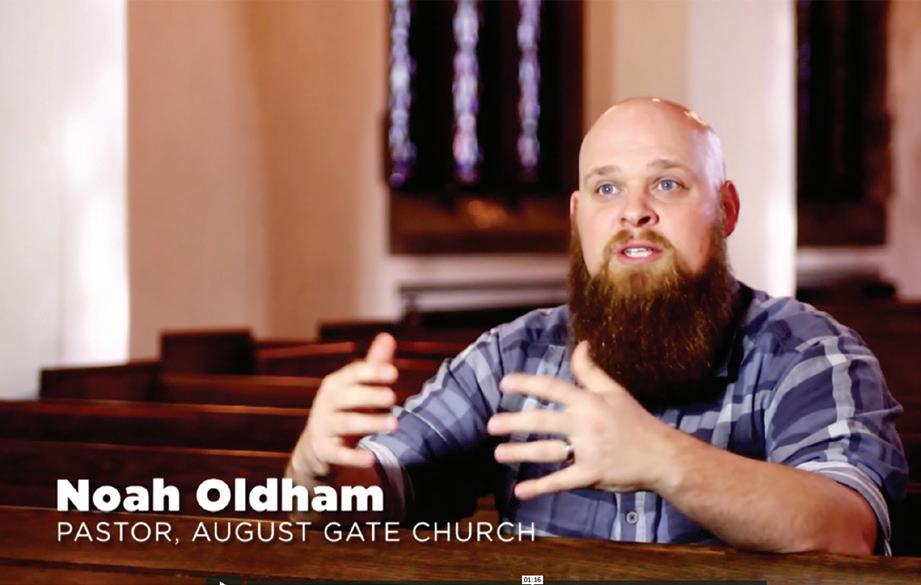
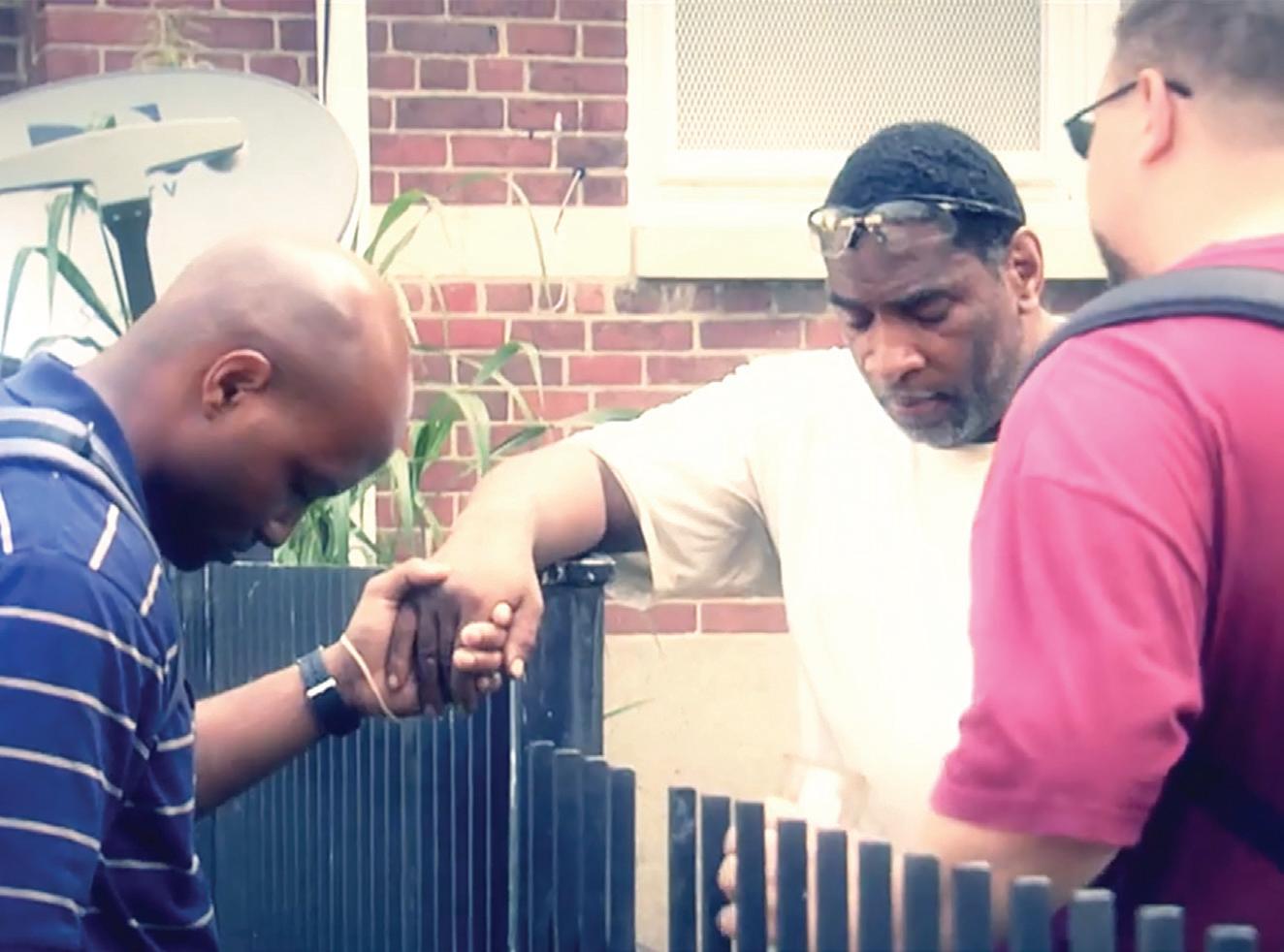
seeing this throng of people fill our streets and love and serve our St. Louis neighborhoods.”
Last summer in Columbus, more than 3,000 volunteers shared the gospel at least 4,948 times at community block parties and other outreach events, and at least 345 people came to know Christ as Savior.
Several St. Louis projects already are posted at namb.net/crossover. Visit the site to watch the video, and for more information about Crossover St. Louis.
7 reasons to attend
1. We need to be with our family, our Southern Baptist family.
2. We need to be inspired to believe again that God can awaken America spiritually and the world can be reached for Christ.
3. We need to hear the Word of God proclaimed, pray and worship together by the thousands, and have our spiritual lives set on fire again.
4. We need to hear the wonderful testimonies and reports about what God is doing across America and the world through our work together.
5. We need to hear how our churches’ financial investment in the Cooperative Program and mission offerings is being used to share the gospel.
6. We need to be encouraged to know that when we are together and working together there is hope in America and this world.
7. We need to join together by the thousands as we pray for our nation at this critical time, calling out to God to revive His church and awaken America so we can reach the world for Christ.
Now is the time for Southern Baptists to lead. Let these words encourage your life today as you lead others into the future:
“An awakening can bring about the evangelization of the world in our generation” (American evangelist Billy Graham).
“The one who mobilizes the Christian church to pray will make the greatest contribution to world evangelization in history” (South African pastor Andrew Murray).
God is not finished with Southern Baptists, America or the world.
sanctity of life
MISSION
Tiny miracles
Babies born a decade apart inspire northern Illinois church and community
BY MORGAN JACKSONWhen Grace Schumacher turned one last October, it was a milestone that once seemed impossible. Her story of survival against the odds has reminded a church and a community about the sanctity of human life.

When Grace’s mom, Mindy, was pregnant, a blood-screening test indicated possible problems. More testing revealed a high likelihood of Down Syndrome. At only 29 weeks, Mindy’s doctor wanted to monitor her because baby Grace was “off-the-charts too small,” said Grace’s grandmother, Charmel Jacobs
This routine procedure became a two-day hospital stay, which then became an emergency C-section as Grace’s heart rate continued to drop much too frequently. The baby needed to be delivered, despite the chance she might not survive. Charmel’s hus-

band, Jerry, started praying out loud as this decision was made.
He said, “Lord, we just need your grace.”
And Grace the Lord gave, literally. Born October 24 at 5:44 a.m., weighing only 1 lb. 9 oz., she was considered a micro-preemie. The family was warned she probably wouldn’t cry. But she gave a little squeak, and then started wailing away.
Grace was in the hospital for three months after that, “an emotional roller coaster for everyone,” her grandmother said. She faced a host of medical complications, and family and friends weren’t even allowed to visit. But finally, one week after her original due date, Grace’s parents took their daughter home.
Charmel wanted to thank Rockford Memorial Hospital for everything they did for their family during that
Continued on page 12
Lifelines
• Prayer shapes two young lives.
• Parents reject advice to abort daughter.
PHOTO:
At just over one-and-a-half pounds, baby Grace Schumacher was born a micro-preemie. She celebrated her first birthday in October (left with her parents).
January 17 is Sanctity of Life Sunday
Abortion by minors drops by 500 in single year
The abortion rate for minors fell by nearly 28% in 2014, according to data released in late December by the Illinois Department of Public health. That represents 500 lives. Overall abortion is down 6%, which is 2,278 less than the 40,750 abortions in 2013. That’s the lowest number reported in Illinois since abortion was legalized in 1973.
Mauck and Baker Law Firm in Chicago credits the newly-enacted parental notification law. That law requires abortion clinics to notify parents 48 hours before their minor daughters have an abortion. The 1995 law was not enforced until mid-2013, following action by the U.S. Supreme Court.
– with info from Illinois Review
Women skeptical of church
More than 4 in 10 women who have had an abortion were churchgoers when they ended a pregnancy, researchers found in a survey sponsored by Care Net, a nonprofit organization supporting more than 1,100 pregnancy centers across North America.
But only 7% of women discussed their abortion decision with anyone at church, and 76% say the church had no influence on their decision to terminate a pregnancy.
Among women who have had an abortion:
65% say church members judge single women who are pregnant.
54% think churches oversimplify decisions about pregnancy options.
41% believe churches are prepared to help with decisions about unwanted pregnancies.
– LifeWayResearch.com
16 pro-life voices
A new book from the Ethics and Religious Liberty Commission seeks to equip Christians to address a variety of life situations from a biblical, pro-life perspective.
The book features 16 female contributors writing on topics including protecting unborn children and vulnerable women from abortion, seeking purity in singleness, teaching children about sex, helping pregnant teenagers, receiving forgiveness for sexual sin, adopting children, living as a single mother, and caring for widows, the elderly and those with special needs.
“Women on Life” is about what it means to be pro-life, said Trillia Newbell, the book’s editor, in an ERLC news release.

– Baptist Press
Sanctity of Life resources are available from the Ethics and Religious Liberty Commission at ERLC.com. Click on “Resources” for bulletin inserts
Faith sustains parents through high-risk pregnancies
continued from page 11
difficult time. So she got the idea (which she credits to the Lord) to write a letter to the editor in their local paper. This was also around the time that she was wrestling with how to influence the culture and put a positive pro-life message into the community.
She enlisted prayer from her pastor that the Lord would give her the ability to construct this letter concisely and positively. Jacobs awoke one morning at five o’clock and started writing. “It was done within an hour,” she said.
In the editorial she expressed her gratitude to everyone in the neo-natal intensive care unit that had been Grace’s first home. She concluded by giving ultimate thanks to her Heavenly Father, praising him for gifting the family with the care the hospital gave them and their vulnerable, yet extremely valuable treasure, Grace. She then wrote, “I wish everyone could peek inside those cribs and understand that each one is a precious soul created by God—no matter how tiny.”
Within days, the letter was in print and on Facebook. It was taped to every monitor at the hospital, and the newspaper later published an article celebrating Grace and the hospital’s acclaimed NICU department. “Over and over, God has confirmed that he wants this story told,” the grateful gandmother said.
‘It’s not up to us’
In the same church in Machesney Park, another young girl’s life—once in question—now stands as a testimony to the goodness of God.
Michael and Jessica Miller were encouraged to terminate a pregnancy because of complications, but they chose not to. Now nine years later, Machesney Park’s former associate pastor, Larry Wells, says, “Riley is an inspiration to all of us.”
At 20 weeks into the pregnancy, the Millers were asked if they wanted to find out the baby’s gender. From the images, they could tell they were having a girl, but also that something was definitely not right. “She had a tumor at the base of her tailbone,” Jessica said. A specialist came in soon after they got the news and told them the child had almost no chance of survival and would need to be monitored very closely.
“That same day, they sent us to a genetic counselor who said we should have an abortion,” Jessica said. The baby would have a host of mental, physical, and developmental problems, and in the eyes of the doctors, the cost of the complications outweighed the value of her life.
The Millers made it very clear that wasn’t an option and never would be. “We told them that doesn’t need to be suggested again. It’s not happening,” Jessica recalled.
But the tumor continued to grow, quickly. By 27½ weeks, it was affecting everything and causing Riley’s heart to fail. It was also starting to affect Jessica. The doctor said they would perform one last ultrasound, and if Riley’s heart was still beating, they would deliver her. The Millers were warned, though, that even then she would have only a 50% chance of survival.
“But I had confidence,” said Jessica. “We had been praying about it.”
The test revealed that somehow, against all medical odds, her heart was beating. So they
LIVING PROOF – Complications caused doctors to encourage Riley Miller’s parents to terminate their pregnancy with her. Riley will turn 10 this year.

delivered Riley—not breathing at first, blue and swollen, but alive.
She initially weighed just over four pounds. Riley immediately underwent surgery to remove the tumor, a genetic anomaly that affects only one in 40,000 babies. After the procedure, she weighed 1 lb. 5 oz. She remained in intensive care for two months.
Although Riley is small for her age and some scars remain from her multiple surgeries, her mother says, “She’s nine years old now. She has no learning disabilities. Looking at her you would never know!”
When questioned how her daughter’s story has impacted other people over the years, Jessica talked about how opening up about their experiences has been a real encouragement to the people in her church, bolstering their faith as they hear about and witness what amazing things God can do.
About two years ago, she was also able to talk to another mother who was faced with the decision either to terminate the pregnancy or trust their baby into God’s hands. Although they lost their child, they chose the latter.
“The main thing I’ve learned,” Jessica said, “is that you never know what’s going to happen. It’s not up to us to make that choice.”
– Morgan Jackson is a freelance writer living in Bloomington, Illinois.
Learning how to learn
If you have been in a leadership role for very long, you have experienced organizational insanity! It can be described as doing what you have always done, the way you have always done it and expecting different results. We chuckle when we hear that because we know how easily it can happen.

It would be nice if annually articulating a clear vision based on the Great Commission, creating a strategy based on the five functions of the church, and then providing training for our staffs and volunteers were all it took to be effective in ministry. Unfortunately, it is not. In addition to these important leadership activities, we must help the churches we lead become learning organizations to prevent drifting off mission.
A church that is a learning organization will stay responsive to its ministry environment. It will learn better ways to meet the needs of its community and create new onramps for the gospel.
We see the principle of being a learning organization in Acts 6:1-7. When the early church had success in reaching Greek people with gospel, the need for reorganization and new staffing to meet the growing ministry needs became evident. These believers learned what needed realignment by looking at the ineffectiveness of their food distribution system and were able to transform their ministry structure, resulting in greater disciple-making capacity.
We live in a time when there is a lot of talk about church revitalization and church planting. I am for both. Let me suggest that when churches need revitalization, often it is because they have quit learning. They no longer know how to make adjustments to their mission efforts because they are not learning from their field efforts. They might not even think that it is necessary to learn from their results in the field. I contend that after we have done our theological homework, the next source for vital organizational learning is the mission field we are trying to reach.
Here are three ways churches can stop the insanity and become learning organizations.
1. Establish a supportive learning environment. Create opportunities for staff or volunteers to express their thoughts about the work they are currently doing without fear of being belittled. Help people become aware of opposing ideas that are present. Help them move beyond fixing problems to creating novel solutions. I have found asking these four questions about how things are going is a helpful place to start:
What is right about our methods and results?
What is confusing about our methods and results?
What is missing from our methods and results?
What is wrong about our methods and results?
2. Create helpful learning processes and practices. In order for an organization to learn, helpful facts and information must be gathered, processed, interpreted, shared and acted on. Probably the best known example of this approach is the U.S. Army’s After Action Review. It is a systematic debriefing after every mission:
What did we set out to do?
What actually happened?
Why did it happen?
What will we do next time?
3. Model learning at the senior leadership level. Senior leaders who model learning: Invite input from peers and subordinates in critical discussions. Ask probing questions. Listen attentively. Encourage multiple viewpoints. Provide time, resources and venues for reflecting and improving past performance and for identifying challenges.
Remember, you will lead the organization that you allow or the one that you create.
Bob Bumgarner is executive pastor at Chets Creek Church in Jacksonville, Fla. He will be the featured speaker at the Illinois Leadership Summit, January 26-27, 2016. Reprinted by permission from the Florida Baptist Witness.
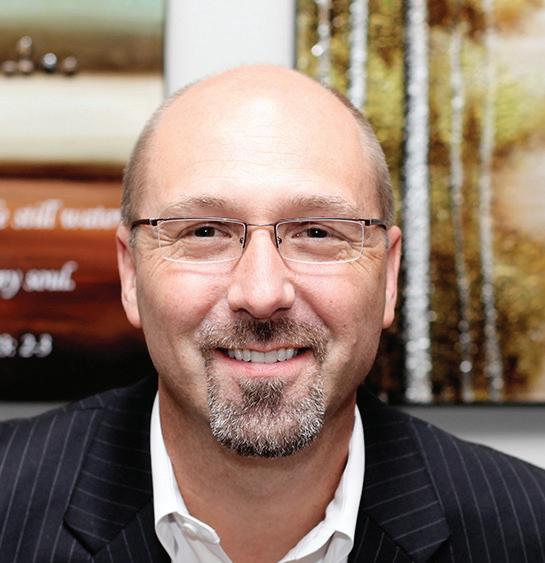
Pat’s Playbook
Missions mixed message
QOne of our deacons has a brother who’s going to the mission field with an independent group. The deacon wants to send some of our missions money to support him, and he’s starting to rally people to change the budget next year.
AThe genius behind the Southern Baptist Cooperative Program is that 40,000-plus churches combine a percentage of their resources to support over 8,000 missionaries worldwide (all at the same time).
Your deacon is asking church members to pool their resources with others to support one missionary. Obviously he has an interest in his brother’s ministry, and he can choose to assist him financially, but he should not expect the church to change its budget.
As a deacon he needs to be lovingly approached and told why the Cooperative Program is the mission support strategy the church has chosen to promote. In order to avoid this situation, many churches have a written policy stating they only support Southern Baptist missions through the Cooperative Program.
Reluctant senior
QI’m old. I know I’m old. It was bad enough when the girl at Hardee’s started giving me “senior coffee.” Now my church wants me to go to the “senior adult” activities. I’m not ready.
AEven if you don’t love the title, I’d encourage you to become part of the senior ministry. Perhaps God has several new senior adults he wants you to meet, and moving you into that department might just bring a fresh place of joyful service. We can’t stop the hands of time, but we can enjoy the adventure of growing older. In fact, not only will you be able to help others through the life lessons you’ve learned, but you also might be surprised at how others can help you as you travel towards the closing chapter of your Christian journey.
Our desire as we age ought to be to declare along with Paul in 2 Timothy 4:7, “I have fought the good fight, I have finished the race, I have kept the faith.”
“My husband and I decided our New Year’s resolution would be to sit in a different pew on Sundays. I moved back two rows, he moved to a church three blocks south.”
Pat Pajak has pastored churches of all sizes across Illinois. He presently leads IBSA’s Church Consulting team. Send your coaching questions for Pat to IllinoisBaptist@ IBSA.org.
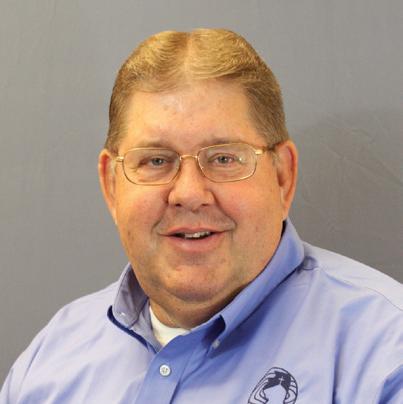
A church that learns has greater opportunity to remove barriers to its effectiveness.
meet the team
Meet: Carmen Halsey
Director of Women’s Ministry and Missions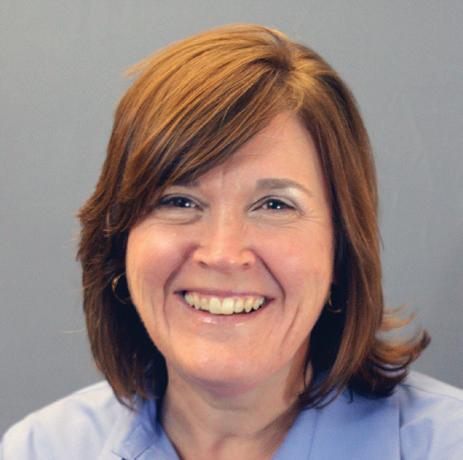 IBSA Church Resources Team
IBSA Church Resources Team
in the news
Smiling ambassador
Champaign | The granddaughter of an IBSA pastor is a smiling, exuberant poster child for Shriners Hospitals. Ava Diehl, whose grandfather, Steve Diehl, pastors Cornerstone Baptist Church of Champaign County, appears in print ads and television commercials for the children’s hospitals, as well as the front page of their website.
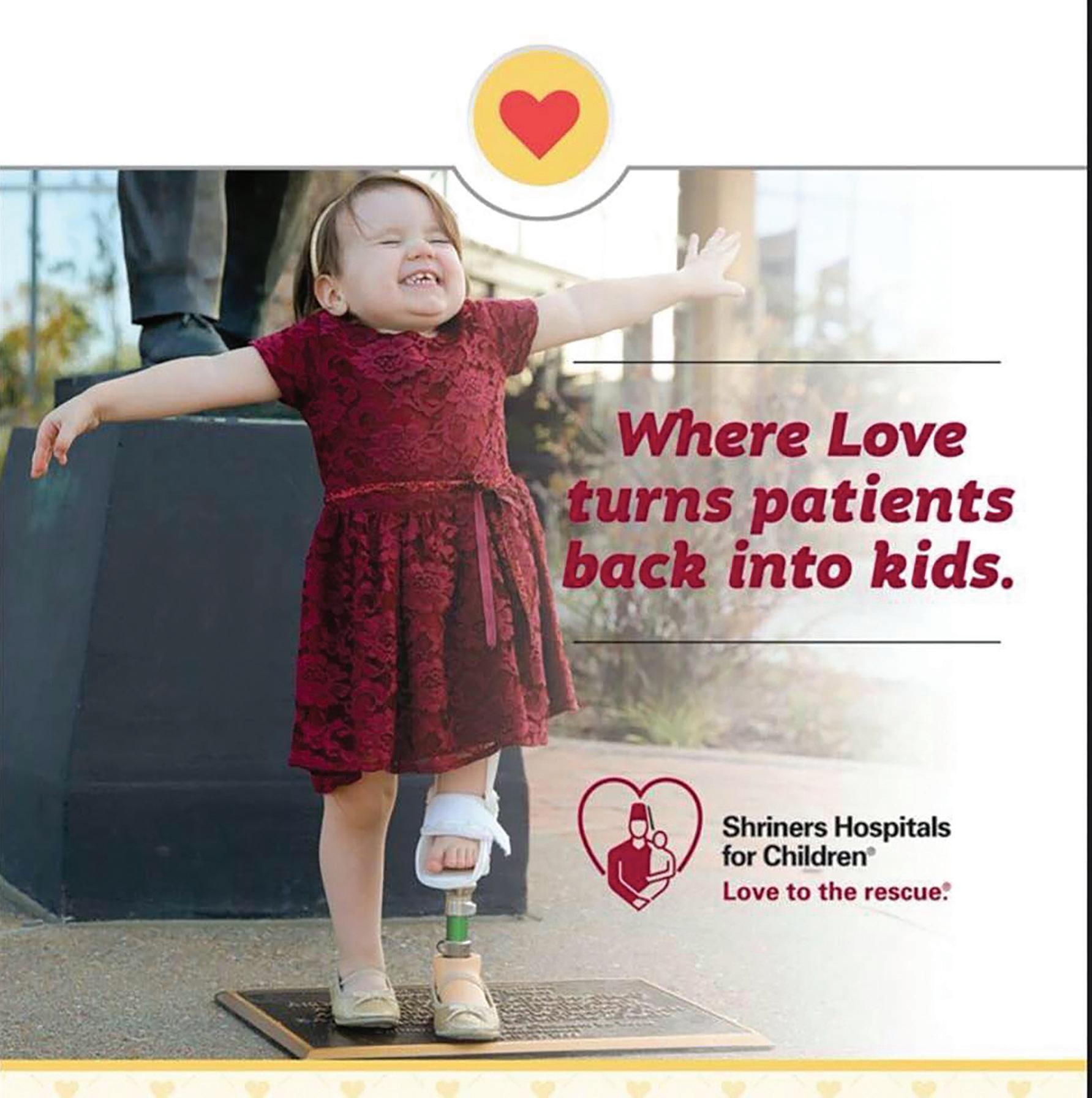
Ava was born with Congenital Femoral Deficiency, a condition in which her left femur is about
Family: I’ve been married to Keith (pastor at Raymond Baptist) for 31 years now. We have two adult sons, Billy Joe (married to Sarah) and John (married to Ashley), and nine grandchildren.
How long have you been at IBSA? Two years this past September.
Favorite thing about church as a kid: Learning. I liked Sunday school, especially when a teacher would encourage questions and give us an opportunity to figure out our thoughts in a safe environment that fostered learning, as well as pointing us to the Bible.
Favorite thing about church now: Small groups: shared community, learning and vulnerability.
Memorable moment as an IBSA staffer: When I first started, I invited a few members of the team to join me in visiting ministry partners. I had it in my mind that the destination was about six hours away. It was actually double that, and it became the joke that regardless of where we’re going, Carmen thinks we can get there in six hours. “Don’t ask Carmen. She thinks we can get around the world and back in six hours or less.”
Favorite movie: Mr. Holland’s Opus
Give us some Springfield highlights for you. I really like the agriculture, the corn and bean fields, watching the planting and harvesting. We live in an area that touches the world through agriculture.
Favorite Scriptures: Jeremiah 1:5 and John 15
half as long as her right. She received a prosthesis at Shriners, and will undergo surgery next week to begin to lengthen her leg.
Ava’s ad has run in the Springfield State JournalRegister and in Delta Air Lines’ in-flight magazine, her grandfather said. The TV commercials featuring her have been seen on channels including Fox News and the Hallmark Channel.
people
David Gilleland is the new pastor of First Baptist Church of Coal City. A life-long Illinois resident, Gilleland served in multiple leadership roles at Trinity Baptist in Gillespie and began preaching pulpit supply in Macoupin Association 10 years ago. He also serves as Suicide Prevention Program Manager for the 416th Theater Engineer Command in Darien.
Pastor Gilleland and his wife, Rejeana, have five children.
Charles Campbell, IBSA’s director of church planting in Southern Illinois, started a new role January 1 with the North American Mission Board as the agency’s Midwest Regional Church Planting Catalyst and Multiply Trainer.
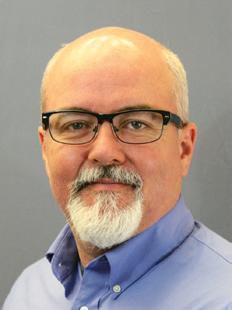
“The IBSA family has loved my family well and we will miss you,” Campbell told staff. “We will not be moving from Springfield so I will still be serving IBSA as an Illinois Baptist church member.”
Van Kicklighter, associate executive director for the Church Planting team, pointed to some of Campbell’s contributions over 15 years at IBSA. “Youth Encounter, Super Summer, church planting, zone consulting, and a host of personal relationships. For all of these, I know we are all grateful. Join me in praying that the Lord will use Charles in a mighty way for the cause of Christ in the months and years to come.”
CAC redevelopment plans honored
East St. Louis | The Christian Activity Center recently was awarded $20,000 by Tom’s of Maine, best known for their toothpaste and other natural products.
The company’s annual “50 States for Good” program selects a non-profit organization from each state to receive funding for projects. The CAC, a first-time entrant in the competition, was
chosen as the Illinois winner and will use the $20,000 for their ongoing park development project.
The park initiative is designed “to bring beauty, prosperity, and safe, open green spaces to kids and families of the region we already serve,” according to the CAC’s Facebook page. Go to http://www.cacesl.org/grow/ for more information.
Nick Candler, who has served as manager of Streator Baptist Camp since 2013, has resigned from his role with IBSA to pursue other ministry opportunities.
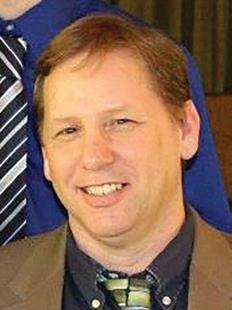
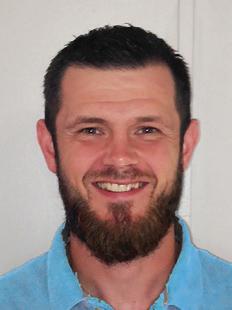
“We want to express our thankfulness to Nick and Whitney (and kids) for their service with IBSA,” said Mark Emerson, associate executive director for the Church Resources team. “We also want to pray for them as they contemplate missionary service or other assignments that God is calling them to pursue.”
PAID
Franklin Baptist Association seeks a bivocational director of missions. Send resume and letter concerning your desire for this position to Franklin Baptist Association Office, Re: DOM Search Committee, 105 S. McLeansboro St., Benton, IL 62812, or fbamc@frontier.com.
Westside Missionary Baptist, Mt. Vernon, seeks a bivocational pastor. Send resumes to 2900 Veterans Memorial Dr., Attn: Deacons, Mt. Vernon, IL 62864.
FBC Elizabethtown seeks a parttime/bivocational youth director. Contact Pastor Ed Lafferty at (618) 287-7336 or (618) 841-0049.
Bethel Baptist Church in Princeton seeks a dynamic, full-time pastor who believes strongly in Matthew 28:16-20. Salary, medical/retirement package, and parsonage available. Call (815) 879-9181 or send resumes to Bethel Baptist Church, 1028 South Sixth St., Princeton, IL 61356.
First Baptist Church of Farmington, MO, is seeking a full-time associate pastor for discipleship and administration. Resumes or inquiries may be sent via e-mail to: fbcfarm@ sbcglobal.net Attn: Personnel Committee, or via USPS to 210 North A Street, Farmington, MO 63640.
EVENTS
January 7, 8, 14, 16, 19
IBSA Tax Seminars
What: Updates on 2016 tax code changes and IRS guidelines for pastors, treasurers, and finance committees
Where: Jan. 7: IBSA Building, Springfield, 9 a.m. to noon; Chicago Metro Association, 7-9 p.m.; Jan. 8: Emmanuel Baptist, Lemont, 9 a.m. to noon; Jan. 14: Woodlawn FBC, 9 a.m. to noon; Gateway Association, 6-9 p.m.; Jan. 16: Halsted Road Baptist, Rockford, 8:30 a.m. to noon; Jan. 19: New Hope Baptist, Coal Valley, 1-4 p.m.

Contact: AlexisDumire@IBSA.org
Info: IBSA.org/church_health
January 26-27
Illinois Leadership Summit
What: Leadership training for your ministry context
Where: IBSA Building, Springfield Register: www.IBSA.org/summit
Contact: BarbTroeger@IBSA.org
February 16
Rekindling the Call
What: A free retreat for IBSA pastors and wives
Where: Streator Baptist Camp
Contact: AlexisDumire@IBSA.org
February 20
Church Technology Conference
What: Learn how to use technology for outreach and for corporate worship.
Where: IBSA Building, Springfield
Contact: CathyWaters@IBSA.org
February 27
VBS Clinic
What: Training in multiple age groups and focus areas
Where: Chatham Baptist Church
Contact: CathyWaters@IBSA.org
Information: www.IBSA.org/kids
March 10
iConnect: IBSA/Pastors Meet-Up
What: Introduction to IBSA staff, ministries, training and opportunities, for pastors and church staff members
Where: IBSA Building, Springfield
Contact: AlexisDumire@IBSA.org
Worldview Conference
Biblical Training for Today’s Culture
Wed without debt
dave says
remember the best day of their lives.
QHow do you have a wedding without debt?
AWow, where do I start on this one? I guess the best way is to tell the truth. Honey, that question kind of makes you sound like a little princess.
How do you have a wedding without debt? It’s really simple. You have a wedding with the money you have. There’s nothing wrong with small, inexpensive weddings. And once you accept that and start thinking about things from a mature, adult point of view, you’ll start realizing you can scrimp and save and have a really nice, small wedding.
Lots of people have beautiful, memorable ceremonies and even small receptions for less than $1,000. Sure, you can run out, go into debt and wear an $8,000 wedding dress for a few hours on one day of your life. Or, you can find one that’s much cheaper— even something that’s been worn one time—for a couple hundred dollars. Think that’s tacky? Well, let me tell you what’s even more tacky and dumb—going $15,000 to $20,000 in debt for one day!
To have a wedding without debt, you have to be creative and think within your budget. That means growing up and not throwing a temper tantrum just because you can’t have every little thing you want. Most people don’t have lavish, expensive weddings, and guess what? Years down the road they’re still married, madly in love and laughing and hugging when they
What is the WAR on poverty?
Should Christians get involved in politics?
What is the biblical purpose of government?
Should judges and the courts hold the ultimate power in a nation? Does the Bible support some form of democracy?
What does the Bible teach about social ethics?
Does Scripture REQUIRE cultural engagement?
What is the free market system?
Please, don’t turn what’s supposed to be a happy occasion into a financial mess that will take years to clean up!
Weighing our options
QMy husband works for a large company and receives restricted stock bonuses of approximately $5,000 each year. We’re not sure exactly how long they’re restricted, and we both wonder if we’re allowed to sell these options?
AYou said your husband works for a large company, so my guess is they do this as an employee retention move. That’s why they restrict the stock. They’re trying to get people to stay with the company, and you’ll only be able to sell them after they are no longer restricted.
Usually, these kinds of things have a one- or two-year restriction. I doubt they’d put a fiveyear hold on it, but check with the company to find out the specifics. They can tell him when the stock is free to be sold.
If it were me, I wouldn’t hold on to too much of it. I don’t own single stocks. They have too much risk for my taste. Keep a little bit, if you want, but don’t put all or even most of your financial eggs into that one basket!
Financial advisor Dave Ramsey is a prolific author and radio host.
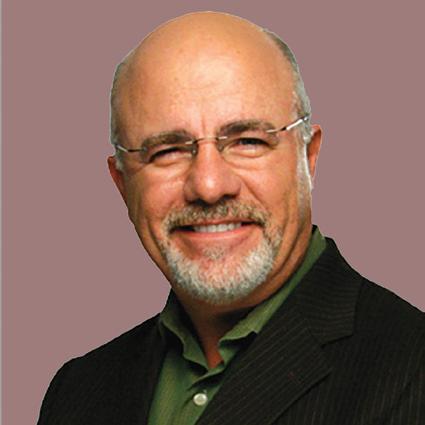
Where do the candidates stand?
Who’s funding their campaign?
Who’s endorsed them?
i lead
Earning their trust
his year’s Major League Baseball winter meetings just concluded, and team rosters are taking shape for next spring. Some fans are elated about their team’s prospects for 2016, while others are getting more nervous as each day passes.
Watching how leadership decisions made at the top tend to be felt all the way down to the fans, it has struck me that in many ways, churches are like baseball teams.
JERRY DAYThey often have multiple layers of leaders working together to achieve a set of goals and communicate them to church members, which can create murky waters for the primary leader to navigate.
Leaders of churches, associations or any other Christian-based entity must have the capacity to lead with an organization-wide perspective, the fourth phase in IBSA’s leadership development process.
I believe trust building is essential for leaders who lead organizations. Through the years, I have referred often to a concept from the Building Powerful Ministry Teams seminar. I call it “the three C’s of trustworthiness.”
The first “C” is for character Though people may seem to want leaders who are “characters” these days, they are more likely to trust leaders who exhibit biblical character. For example, if staff members in an organization cannot trust the primary leader to respond to a voicemail, text or e-mail in a timely manner, how can they trust him to provide even-handed management?
Another essential quality for organizational leaders is competence Though we may trust the character of a leader, that person must also perform his duties with excellence. I have sometimes given the example that you can trust my complete honesty (a biblical character trait), but trusting my competence to fix your car is another story altogether.
The third “C” stands for concern. In organizational leadership, it is sometimes necessary to settle disputes between other leaders. In these situations, success is all but assured when those involved believe the leader is concerned for them, for everyone else in the organization, and for the organization as a whole.
Jerry Day previously served as administrative director for IBSA’s zone strategy.
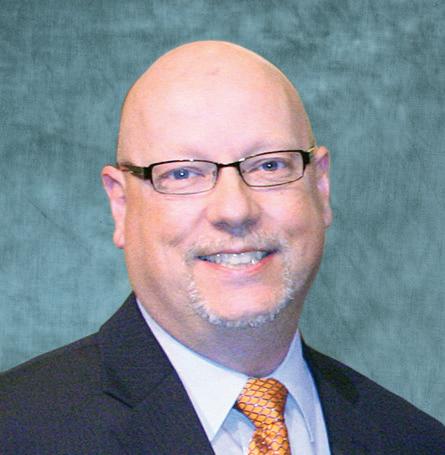
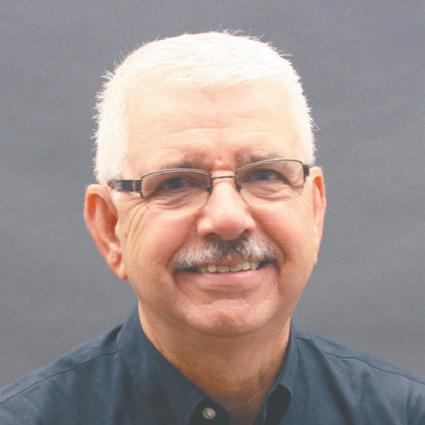
Valentine’s Day falls on Sunday this year. For some people, it’s a great day. For others, it’s a holiday to be avoided. How can you make a love-themed worship service meaningful for the love-sick and the love-starved alike?
Avoid the hokum. Skip the sweetheart banquet and The Newlywed Game. Save the couples ministry for a time of year when it doesn’t serve to emphasize the singleness of people who aren’t half of a couple.
Silent witness?
“But how can they call on him they have not believed in? And how can they believe without hearing about him? And how can they hear without a preacher?”
(Romans 10:14, HCSB)
Focus on God’s love. This is the Romans 5:8 kind of love. Point to the cross. Explain “agape.”
Broaden the applications. Love stories apply to all kinds of relationships. Apply biblical lessons to siblings, parents and kids, and friends. Not all stories need be about happily-ever-after couples.
Advertise ahead of time. If you choose to preach on marriage, tell people ahead of time so the single and the heartbroken can choose if they’re ready to tackle the topic.
Love out, not love-in. Make the day about outreach. Choose a mission or community ministry and bless it with gifts and volunteers.

Deliver chocolates to guests. Who wouldn’t be glad to see someone from church standing on their doorstep Sunday afternoon holding a box of chocolates?
Church needed here...
Location: Elmhurst
Sometimes thinking about telling others the good news of Jesus is a terrifying experience. That fear cripples my witness at times. My mind concocts wild scenarios about expected responses from people, such as slamming doors in my face or calling the police to have me removed. While those scenarios have never happened, people have rejected the gospel when I have shared it. That rejection adds to my fears about sharing the most valuable news that the world needs to hear: Jesus saves!
KEVIN CARROTHERSThis reminds me of a dear friend who was concerned about the salvation of a coworker. This coworker started receiving cultic material that concerned my friend to the point of protest. Finally, the coworker responded, “You keep telling me what’s wrong with this cult, but you have never told me what you believe.”
Needless to say, the man began sharing the gospel.
Paul makes it clear that the lost need to hear the gospel, and Christians need to share the gospel. Despite my fears, I am compelled to tell others about Jesus. To be a silent witness for Christ is to be no witness for Christ.
PRAYER PROMPT: Lord, I ask you to give me the boldness to share the gospel.

Kevin Carrothers serves as pastor of Rochester FBC and president of IBSA.
Target: Unreached singles and families in this seemingly idyllic community of over 45,000 people where there are no Southern Baptist churches.

Characteristics: This upper-middle class western suburb is home to Elmhurst College and the hometown of noted poet and historian Carl Sandburg. Prayer needs: Pray that the Lord of the harvest would raise up laborers to minister to the 14,600 households which make up Elmhurst.

